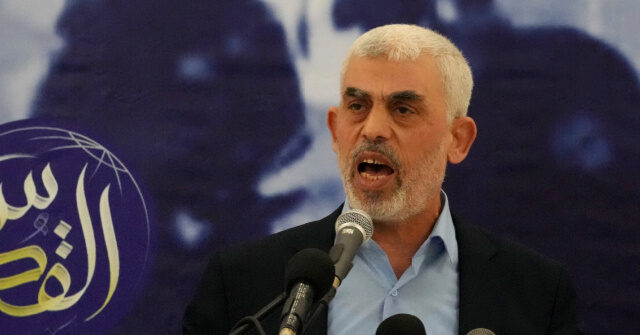On Thursday, the Israel Defense Forces (IDF) released drone footage that documented the final moments of Yahya Sinwar, the notorious Hamas leader responsible for orchestrating the October 7 attacks. This video provides a chilling glimpse into the circumstances surrounding his demise when he was ultimately killed by Israeli ground troops in Rafah, Gaza. The footage shows Sinwar in a dilapidated room, seated in an armchair and surrounded by debris, visually embodying the dire consequence of his violent leadership. Intriguingly, he appeared to be in a weakened state, having lost one of his hands, which raises questions regarding the events leading to his final moments. As the drone approached, Sinwar reacted with desperation, lifting a weapon in a futile attempt at defiance before throwing it at the drone and missing, an act that underscores both his deteriorating situation and the futility of resistance.
The IDF’s operational approach involved meticulous surveillance of the Tel Sultan district in Rafah, where they first detected suspicious movement around 10:00 a.m. The Israeli forces observed the activities intensifying throughout the day, identifying a pattern that suggested Hamas operatives were preparing an escape route for their leader and other comrades. Unbeknownst to the Israeli troops, this movement involved Yahya Sinwar and others who were allegedly coordinating a desperate exit from Gaza across the border into Egypt. When the IDF engaged the menacing presence of armed militants, the Hamas operatives quickly dispersed into various buildings, fearing confrontation. This tactical maneuvering demonstrated the chaos and urgency within the ranks of Hamas amid encroaching Israeli forces.
Seeking refuge in a building, Sinwar and his bodyguards moved to the second floor as Israeli forces closed in on their location. As tensions escalated, an Israeli tank fired a shell into the structure, resulting in significant damage both to the building and to Sinwar himself. The drone footage reveals the grim aftermath of the tank shelling, providing a harrowing image of Sinwar amidst the wreckage, a stark reminder of the potential volatility of leadership roles in militant organizations. The positioning of Sinwar within the damaged structure not only illustrated his vulnerability but also reflected the overall deteriorating control of Hamas amid the ongoing conflict.
Despite attempts to escape their entrapment, Sinwar and his entourage found themselves cornered by an IDF platoon that had effectively surrounded the house. In a strategic effort to flush them out, the Israeli forces deployed two grenades, forcing Sinwar and his men further into despair. This engagement led to the mangling of Sinwar’s hand, potentially caused by either the initial tank fire or the grenade explosions, compounding the physical and psychological torment he experienced. The desperate situation was exacerbated by the overwhelming military might of the IDF, clearly evident in the drone footage, which contrasted Sinwar’s feeble efforts against a backdrop of advanced surveillance technology.
The footage abruptly ended right before the IDF launched another tank shell targeting the building, effectively sealing Sinwar’s fate. The next day, after engaging in recovery operations amidst the rubble, IDF forces discovered several bodies, including one that bore a striking resemblance to Sinwar. The identification process was meticulously carried out, utilizing DNA analysis to confirm his identity later that day. This methodical approach underscored the determination of the Israeli military to account for key personnel involved in orchestrating violence against civilians, particularly in light of Sinwar’s significant role within Hamas.
The implications of Yahya Sinwar’s elimination resonate deeply in the ongoing conflict between Israel and Hamas. His leadership was characterized by a tactical focus on aggression and terrorism, with the October 7 attacks marking a particularly brutal chapter in the history of enmity between these two entities. The IDF’s successful operation not only signified a potential shift in momentum but also compelled Hamas to reevaluate its strategies in light of significant leadership losses. The drone video serves as a stark reminder of the increasingly perilous nature of leadership within militant organizations, where the risks of capture or death loom large. Overall, Sinwar’s demise highlights the intricate dynamic of power, fear, and retribution that dominates the ongoing conflict in the region.

